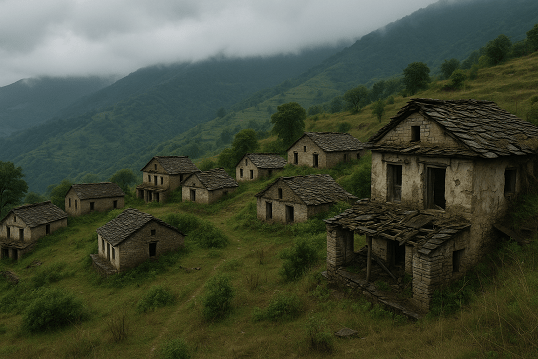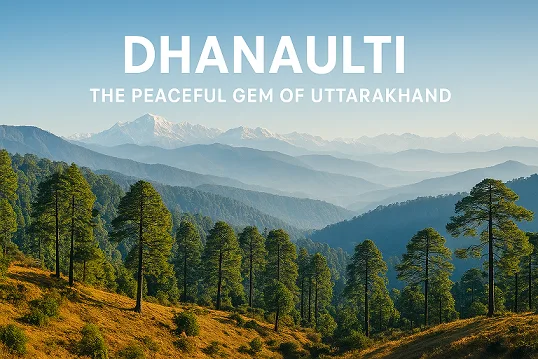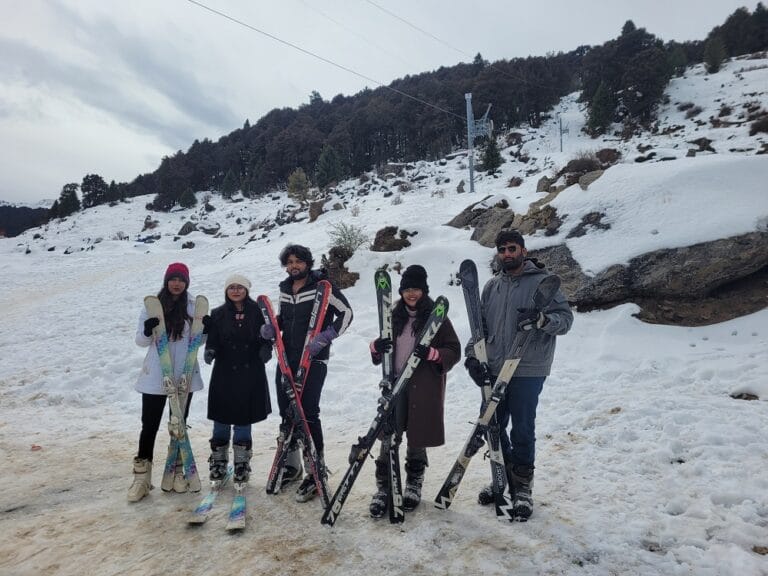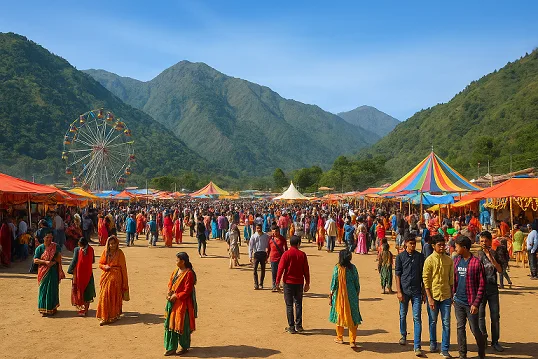By – Mohit Bangari
Why People Are Leaving Their Villages – The Ghost Village Problem of Uttarakhand

Mohit Bangari
Explore Himalaya With Me!!
Facebook
Email
WhatsApp
Twitter
LinkedIn
Tumblr

In the beautiful but fragile hills of Uttarakhand, a silent tragedy is unfolding. One by one, villages are turning into ghost towns. You can see locked doors, broken houses, and empty courtyards. Families who once lived together are now scattered across cities. This article explores why people are leaving their ancestral homes and what we all can learn from it.
Table of Contents
How Many Ghost Villages Are There?
According to government data and field studies, the number of ghost villages in Uttarakhand is growing every year. In the 2011 census, there were over 1,000 villages with zero population. Today, that number is close to 2,000. In Pauri Garhwal, over 300 villages have been fully abandoned. From 2018 to 2022, more than 3 lakh people migrated from the hills to the plains and cities. This is not just data—it shows a deep crisis.
Why Are People Leaving Their Villages?
The main reason is the lack of jobs and income. Most villagers depend on agriculture, but due to small land sizes, poor irrigation, and unpredictable weather, farming is no longer profitable. Many youngsters leave for better job opportunities in cities, hoping for a more stable future.
Another big issue is the lack of basic facilities. Many villages still don’t have motorable roads, proper schools, or even primary health centres. In emergencies, people walk several kilometers carrying patients on their backs. Children travel long distances for education or move out completely. Without roads, schools, and hospitals, it becomes difficult for families to stay.
Wildlife attacks are another major problem. Leopards, bears, and monkeys often attack people, destroy crops, and create panic. In some cases, entire villages have left out of fear of man-eaters. This problem has increased in the last few years.
Natural disasters like landslides, cloudbursts, and flash floods are becoming frequent due to climate change. These destroy homes, fields, and roads. Many families who lost everything in such disasters decided not to return. Also, the changing rainfall pattern and drying water sources have made farming even more difficult.
What Happens When Villages Are Deserted?
When a village becomes empty, it’s not just about people leaving. It leads to the loss of culture, tradition, and identity. Old customs, local dialects, and festivals start to fade. Temples become deserted, and community spaces fall into ruin.
Environmentally, ghost villages also become dangerous. Terraced fields collapse, and jungles grow unchecked. This makes the area prone to soil erosion and illegal activities like timber cutting and poaching. Even border security can become weak due to empty hill areas.
Are There Any Villages That Are Thriving?
Yes, there are some positive examples. In Bageshwar district, villages like Khati and Wachham are doing very well. People there started homestays, eco-tourism, and herbal farming. Tourists began visiting, and locals earned ₹80,000 to ₹90,000 in just two months. These villages show that self-reliant models can work when community and opportunity go hand in hand.
There are also individuals who returned from cities and started something new in their villages. Climate-resilient homes, organic farms, and small-scale tourism have helped many revive their local economy. These efforts are examples of reverse migration.
What Is Being Done to Stop Migration?
To handle this issue, the state government has set up a Migration Commission which later became the Migration Prevention Commission. Some key schemes include Mukhya Mantri Swarojgar Yojana, which promotes small businesses and self-employment in villages. Other schemes focus on improving roads, power, water, and digital access.
However, many people feel that scheme implementation is weak. Often, young villagers don’t receive proper training or guidance to start their businesses. There’s a need for more ground-level action, not just plans on paper.
What Can Be Done to Bring Back Life in Villages?
Here are some strong and practical steps that can help:
Every village must have roads, internet, and transport to connect with the outside world.
Education and health services must be made stronger, especially for children and women.
Tourism, herbal products, and handicrafts should be promoted as income options.
Proper protection from wild animals, like fencing and forest patrols, is a must.
Youth must get skill training, financial support, and local market access to build their future in the hills.
Water harvesting, smart farming, and climate-resilient practices should be supported by government and NGOs.
Final Words
The ghost village crisis of Uttarakhand is not just about migration. It is about the loss of homes, identity, and history. But there is still hope. With the right mix of planning, support, and local willpower, the hills of Uttarakhand can become vibrant once again.
This article is not about blaming anyone. It is to help us understand the root of the problem and encourage collective thinking. As someone who belongs to the Himalayas, I truly believe that these stories must be told. If you have a story from your village or want to share something special, feel free to contact me.
Let us not allow our hills to fall silent. Let’s revive them—one village at a time.
You can also explore more on Himalayan treks like Darma Valley, Adi Kailash, and others on my website mohitbangari.com, where I share full guides, routes, permit tips and cultural info.
Do you know about Ramman festival of Salud-Dungra village? It’s one of the intangible world cultural heritage of India in UNESCO. You can read a detailed article on this topic here.
Facebook
Email
WhatsApp
Twitter
LinkedIn
Tumblr
Related Post

Adventure
Mohit Bangari
30 November 2025

Mohit Bangari
Explore Himalaya With Me!!






